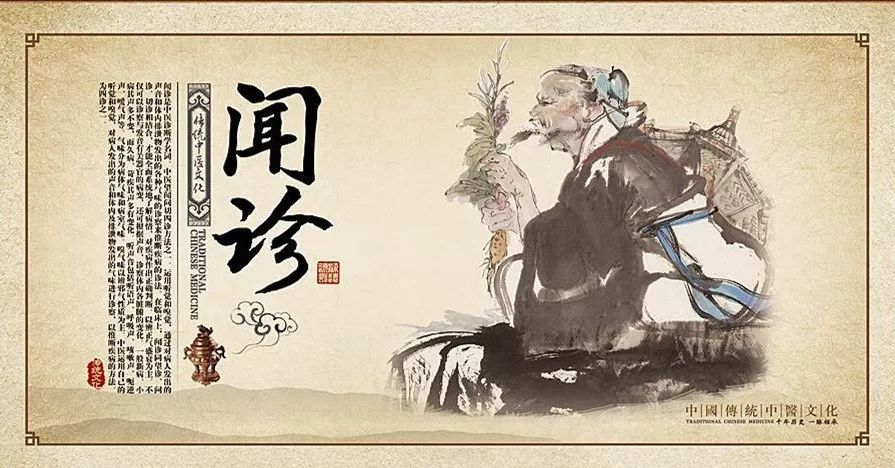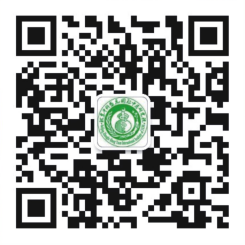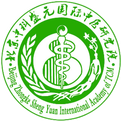
Sound Diagnosis in TCM
Sound diagnosis is a method of understanding the nature of a disease based on various sounds produced by the patient, analyzing their pitch, urgency, strength, and clarity.
①High-pitched sound: Indicates that the vital energy is not deficient, belonging to heat syndrome or excess syndrome.
②Heavy and turbid voice: Indicates external invasion of wind-cold, lung qi not disseminating, lung fluids not distributing, qi stagnation and fluid condensation, dampness obstructing the lung system, causing thickening of the vocal cords, resulting in a heavy and turbid voice.
③Hoarse voice: A sudden hoarseness due to wind-cold binding the exterior, with the lung system being invaded by cold, leading to fluid condensation and inability to produce sound.
④Low voice, short breaths, and reluctance to speak: A sign of deficiency of the middle qi.
⑤Confused speech: Refers to the patient being unclear in consciousness and speaking incoherently. This is indicative of acute febrile disease, where heat invades the pericardium, disturbing the spirit, leading to this condition.
⑥Weak voice: In the late stages of illness, the patient may exhibit unclear consciousness, a low voice, and repetitive speech, indicating long-term illness with deficiency of the vital energy, leading to disordered spirit.
⑦Coughing sounds of varying pitch and urgency can indicate cold, heat, deficiency, or excess: A clear and high cough without illness, with a red tongue and lack of fluids, indicates dryness-heat invading the lungs, or water not nourishing wood, with wood-fire harming metal. A heavy and turbid cough with abundant clear phlegm indicates external invasion of wind-cold, internal stagnation of water, or deficiency of both yin and yang, with water stagnating internally. A rapid and urgent cough that does not stop indicates cold evil binding the exterior, causing constriction of the qi pathways. If phlegm is expelled and the cough stops, it indicates obstruction of the qi pathways.
⑧Hiccups: A spasm of the diaphragm. A high-pitched and continuous hiccup indicates excess syndrome, where lung qi is not disseminating, spleen qi is not moving, and liver qi is not smooth, leading to diaphragm spasms. If the hiccup is low and intermittent, it indicates deficiency syndrome, such as spleen and kidney yang deficiency, where the diaphragm loses warmth; or liver and kidney yin deficiency, where the diaphragm loses moisture, which can also occur intermittently.

Sound Diagnosis in TCM – Wheezing
【Sound Diagnosis】The characteristics of wheezing include: rapid breathing resembling asthma, high-pitched and intermittent sounds, phlegm rattling in the throat, often occurring intermittently and difficult to cure.
【Clinical Significance】Clinically, wheezing is often due to internal phlegm disturbance, combined with external cold, binding the exterior, leading to the activation of hidden phlegm. It can also be caused by external pathogens, failing to disperse from the exterior, binding the lung meridian, or due to prolonged residence in cold and damp environments, or excessive consumption of sour, salty, or cold foods, which can trigger asthma.
【Treatment Method】For wheezing caused by internal phlegm disturbance and external cold, the treatment should warm the lungs, disperse cold, transform phlegm, and stop wheezing, using the formula Xiao Qing Long Tang (Minor Blue Dragon Decoction). For wheezing caused by external pathogens failing to disperse from the exterior, leading to heat transformation, the treatment should disperse the lungs, clear heat, transform phlegm, and stop wheezing, using the modified Yue Bi Jia Ban Xia Tang (Yue Bi Decoction with Pinellia).
Sound Diagnosis in TCM – Soliloquy
【Sound Diagnosis】The characteristic of soliloquy is: talking to oneself, murmuring continuously, stopping when seeing others, and lacking continuity.
【Clinical Significance】The manifestation of soliloquy suggests that the person has insufficient heart qi and is lacking nourishment for the spirit, often indicating a deficiency syndrome.
【Treatment Method】To tonify heart qi, the formula Gan Mai Da Zao Tang (Sweet Wheat and Jujube Decoction) is recommended.
Sound Diagnosis in TCM – Delirium
【Sound Diagnosis】The characteristic of delirium is: laughing and cursing wildly, speaking incoherently, singing loudly, and running about without clothes.
【Clinical Significance】Delirium due to excess heat in the Yangming is caused by evil transmission to the Yangming, leading to heat accumulation in the Yangming.
【Treatment Method】For delirium due to excess heat in the Yangming, the treatment should clear and drain the Yangming, using the formula Liang Tuo San (Cool and Drain Powder) or Da Cheng Qi Tang (Major Order the Qi Decoction); for delirium due to liver and gallbladder fire, the treatment should clear and soothe the liver and gallbladder, using Long Dan Xie Gan Tang (Gentiana Decoction to Drain the Liver) combined with Dan Zhi Xiao Yao San (Gardenia and Free and Easy Powder); for delirium caused by phlegm-fire disturbance, the treatment should eliminate phlegm and lower fire, using Meng Shi Gun Tan Wan (Ming Stone Phlegm Pill); for delirium caused by blood stasis, the treatment should invigorate blood and resolve stasis, using Tao Ren Cheng Qi Tang (Peach Kernel Order the Qi Decoction) or Di Dang Tang (Di Dang Decoction).
Sound Diagnosis in TCM – Eructation
【Sound Diagnosis】Eructation refers to the sound produced by gas rising from the stomach. The sound may have an acidic, rotten odor, and if the eructation is continuous, it is often caused by food stagnation in the stomach; frequent, weak eructation with clear water vomiting often indicates spleen and stomach weakness.
【Clinical Significance】Eructation caused by food stagnation is often due to irregular eating habits, leading to stagnation in the stomach, obstructing the qi mechanism, causing stomach qi to rise; eructation caused by liver qi invading the stomach is often due to worry and anger, leading to liver qi stagnation, which reverses and invades the stomach, causing stomach qi to rise; eructation due to spleen and stomach weakness is often due to physical weakness or post-illness imbalance, leading to spleen and stomach qi deficiency, resulting in disordered intake and stomach qi disharmony.
【Treatment Method】For eructation caused by food stagnation, the treatment should promote digestion and guide stagnation, using the formula Bao He Wan (Preserve Harmony Pill); for eructation caused by liver qi invading the stomach, the treatment should soothe the liver and regulate qi, using Chai Hu Shu Gan San (Bupleurum Powder to Soothe the Liver); for eructation due to spleen and stomach weakness, the treatment should tonify and strengthen the spleen and stomach, using Li Zhong Tang (Regulate the Middle Decoction).
Sound Diagnosis in TCM – Hiccups
【Sound Diagnosis】Hiccups, commonly known as “burping,” are characterized by: gas rising and producing a sound from the throat. The characteristics of hiccups include: high-pitched and continuous sounds, often indicating excess syndrome; intermittent hiccups with low sounds often indicate deficiency syndrome.
【Clinical Significance】The initial onset of hiccups with loud and forceful sounds, occurring continuously, often indicates excess syndrome; intermittent hiccups with low sounds and weak pulses often indicate deficiency syndrome. Hiccups with a deep and slow sound, cold limbs, and loose stools often indicate cold syndrome; high-pitched and short hiccups, with a red face and thirst, often indicate heat syndrome. The onset of hiccups is often related to the stomach’s inability to descend.
【Treatment Method】For high-pitched and forceful hiccups with a slippery and strong pulse, the treatment should clear and descend; for low and weak hiccups, the treatment should warm and tonify. Cold hiccups can be warmed or dispersed, while heat hiccups can be cleared or descended. For hiccups caused by qi stagnation and phlegm obstruction, the treatment should transform phlegm and smooth the qi. For hiccups caused by weakness of yang qi, the treatment should warm and tonify the spleen and kidney; for hiccups due to insufficient stomach yin, the treatment should nourish the stomach and generate fluids.
Sound Diagnosis in TCM – Vomiting
【Sound Diagnosis】Vomiting can be classified into three types: with sound and material is vomiting; without sound and with material is regurgitation; with sound and without material is dry heaving, also known as “he.” All are caused by stomach qi rising. In clinical practice, it is necessary to differentiate based on the medical history, the sound of vomiting, the characteristics, color, and quantity of the vomitus, and accompanying symptoms.
【Clinical Significance】Common patterns of vomiting include:
-
Cold evil directly invading the spleen and stomach, as stated in the “Shang Han Lun”: “When the stomach qi encounters cold, it rises.”;
-
Summer heat and dampness causing vomiting, characterized by vomiting, abdominal distension, poor appetite, heavy limbs, and sticky tongue coating;
-
Food stagnation vomiting is more common, similar to modern acute gastritis, with sudden onset, vomiting, aversion to food, and abdominal distension and pain, with thick and greasy tongue coating;
-
Vomiting due to stomach cold often occurs in those with spleen and stomach yang deficiency or after exposure to cold, often indicating deficiency syndrome or a mix of deficiency and cold, characterized by vomiting with cold limbs, abdominal pain, poor appetite, fatigue, and pale tongue with white coating.
【Treatment Method】For vomiting due to cold evil invading the stomach, the treatment should use warming and dispersing methods; for summer heat vomiting, the treatment should use aromatic methods to transform turbidity and stop vomiting, using the formula Huo Xiang Zheng Qi San (Agastache Correct Qi Powder) with modifications; for food stagnation vomiting, the treatment should promote digestion and guide stagnation, using Bao He Wan (Preserve Harmony Pill) with modifications; for vomiting due to stomach cold, the treatment should warm the stomach and stop vomiting, using Fu Zi Li Zhong Tang (Aconite Regulate the Middle Decoction) with modifications; for vomiting due to stomach heat, the treatment should clear heat and eliminate dampness, using Wen Dan Tang (Warm the Gallbladder Decoction) with modifications; for vomiting due to liver-stomach disharmony, the treatment should soothe the liver and harmonize the stomach, using Chai Hu Shu Gan San (Bupleurum Powder to Soothe the Liver) combined with Zuo Jin Wan (Left Metal Pill); for vomiting due to stomach yin deficiency, the treatment should nourish stomach yin, clear fire, and stop vomiting, using Yi Guan Jian (Linking Decoction) with modifications. The above methods are for reference only and should be combined with clinical practice to select appropriate treatment methods.
Sound Diagnosis in TCM – Coughing
【Sound Diagnosis】Coughing is a manifestation of the lung’s failure to disseminate and descend, with lung qi rising, thus often seen in lung diseases, but also closely related to other organs.
【Clinical Significance】Coughing should first be differentiated as either external pathogen cough or internal injury cough.
-
External pathogen cough has a sudden onset, with a clear pathogenic cause, and a short course, commonly seen in wind-cold, wind-heat, summer-damp, and dryness-invading lung types, each with its characteristics. Wind-cold invading the lungs can present with heavy cough, clear nasal discharge, chills, fever, itchy throat, and a thin white tongue coating with a floating tight pulse;
-
Wind-heat invading the lungs can present with unproductive cough, sore throat, thick and sticky phlegm, nasal dryness, or dry cough, chest pain, red tongue with thin yellow coating, and a floating rapid pulse;
-
Summer-damp cough is characterized by heavy and turbid cough, with abundant sticky phlegm, either white or yellow, accompanied by abdominal fullness, poor appetite, fatigue, sweating, white greasy tongue coating, and a slippery rapid or slippery pulse;
-
Dryness-invading lung can present with dry cough, little phlegm or blood-streaked phlegm, dry and painful throat, thin yellow tongue coating, and a floating rapid pulse;
Internal injury cough has a slower onset, a longer course, often without a clear cause, commonly seen in lung-spleen qi deficiency cough, lung-yin deficiency cough, kidney-yang deficiency cough, and liver-fire invading the lungs, each with its characteristics. Lung-spleen qi deficiency can present with low cough, shortness of breath, thin white phlegm, pale or swollen face, fatigue, easy sweating, and poor appetite, with a pale tongue and thin white coating, and a weak pulse; lung-yin deficiency can present with dry cough, or blood-streaked phlegm, persistent cough, little sticky phlegm, dry mouth and throat, or hoarseness, with five hearts heat, night sweats, chest pain, red tongue with little coating, and a thin or rapid pulse; kidney-yang deficiency can present with low and turbid cough, clear and thin phlegm, shortness of breath, worsening with exertion, cold limbs, or edema, with a pale tongue and thin white coating, and a deep thin pulse; liver-fire invading the lungs can present with cough with qi rising, unproductive phlegm, rib pain, dry throat, irritability, red tongue with thin yellow coating, and a wiry rapid pulse. In clinical practice, external pathogen cough is often seen as excess syndrome, while internal injury cough is often seen as deficiency syndrome.
【Treatment Method】Coughing treatment varies according to the type. For external wind-cold cough, the treatment should disperse wind and cold, disseminate the lungs, and stop coughing, using Xing Su San (Apricot and Perilla Powder) with modifications; for external wind-heat cough, the treatment should disperse wind and heat, disseminate the lungs, and stop coughing, using Sang Ju Yin (Mulberry Leaf and Chrysanthemum Decoction) with modifications; for summer-damp cough, the treatment should clear summer heat and transform dampness, disseminate the lungs, and stop coughing, using Yin Xiang San (Drink of Fragrant Herb) with modifications; for dryness-invading cough, the treatment should moisten dryness and stop coughing, using Sang Xing Tang (Mulberry and Apricot Decoction) with modifications; for lung-spleen qi deficiency cough, the treatment should tonify the lungs, strengthen the spleen, benefit qi, and stop coughing, using Si Jun Zi Tang (Four Gentlemen Decoction) combined with Yu Ping Feng San (Jade Windscreen Powder) with modifications; for lung-yin deficiency cough, the treatment should nourish yin, moisten the lungs, and stop coughing, using Bai He Guo Jin Tang (Lily Preserve the Metal Decoction) with modifications; for kidney-yang deficiency cough, the treatment should warm and tonify kidney yang, and stop coughing, using Liu Wei Di Huang Wan (Six Flavor Rehmannia Pill) with modifications; for liver-fire invading the lungs cough, the treatment should clear the liver, drain fire, and moisten the lungs, using Qing Jin San (Clear Metal Powder) with modifications. The above treatment methods are for reference only, and clinical practice should consider specific conditions to select appropriate treatment methods.
【END】




